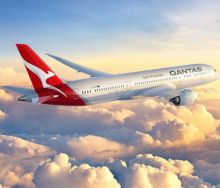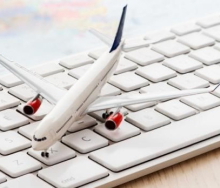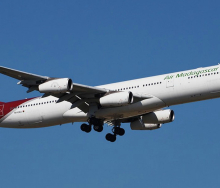This story has been updated since it was published.
Disruptions continue at SA airports due to ATNS's ongoing failure to provide instrument flight procedures, raising concerns over ATNS’s ability to receive approval for its procedures before the holiday season.
Kirby Gordon, FlySafair Chief Marketing Officer, confirmed that flights operating into King Phalo Airport on November 20 had been cancelled or diverted to either King Shaka International Airport or Chief Dawid Stuurman International Airport due to the inability to operate under suspended procedures for low visibility conditions.
Acsa issued a statement advising that other airports, including OR Tambo, had been affected by inclement weather conditions.
Linden Birns, MD of Plane Talking, explained that the ATNS’s withdrawn instrument flight procedures, implementation of ‘flow control’ and temporary downgrades to the classification of Johannesburg’s airspace would continue to disrupt flight schedules, cause delays, diversions and cancelled flights, as well as missed connections for passengers and checked luggage.
He added that certain runways at OR Tambo currently have no instrument flight procedures for approaches and departures from the North. This is exacerbated by the shortage of air traffic controllers at the airport triggering the implementation of ‘Flow Control’ (increasing time between flights, throttling traffic flow).
Birns said 10% of flights to, from and within the country have been affected since July 19 when over 300 procedures were withdrawn.
Aaron Munetsi, AASA CEO, added that one of AASA’s members reported that between 19 July and 9 October, it incurred 3 892 delayed flights, 77 cancelled flights and 12 diversions.
“The cumulative delay time for just that one airline over this period was an eyewatering 91 075 minutes or 63,25 days. This is unacceptable by any measure,” said Munetsi.
Birns explained that airlines had felt the impact in terms of increased fuel consumption.
“The net result has been aircraft standing in long queues with their engines idling and burning precious fuel – which is like burning cash – waiting to take off or being placed in holding patterns before being guided on to the approach path for landing.”
Added to this, there are wider ramifications across the travel sector as hotels, other establishments and other types of operators all depend on passengers arriving on time.
“ATNS has created this crisis and is now trying to find solutions, but there is no silver bullet and it won’t be easy as there is a global shortage of suitably ICAO-accredited airspace and procedure designers. It has identified some and reached out to other air navigation service providers in the world to see if they are willing to send experts or assist on a contract basis,” said Birns.
Compounding the issue, the SA Civil Aviation Authority (SACAA) has rejected many of ATNS’s applications for the re-approval of procedures and returned them to ATNS for reworking.
“Our understanding is that revised procedures were presented to SACAA approximately two weeks ago, but SACAA rejected them on the basis that additional work had to be done,” said Gordon.
According to Birns, further discussion between the Minister of Transport and SACAA is required to establish clear guidelines on what is needed and what format is preferred, to prevent the paperwork from being rejected and the situations from being prolonged.
“Similarly, while the Minister is talking to the executive management of ATNS and briefing airline industry associations, she would benefit from also hearing from the people at the coalface who have to try and work through the backlog. This will provide her with a clear appreciation of what it entails, what sort of resources are required and present an honest and accurate picture of what is happening and the progress being made, which is currently slow,” said Birns.














